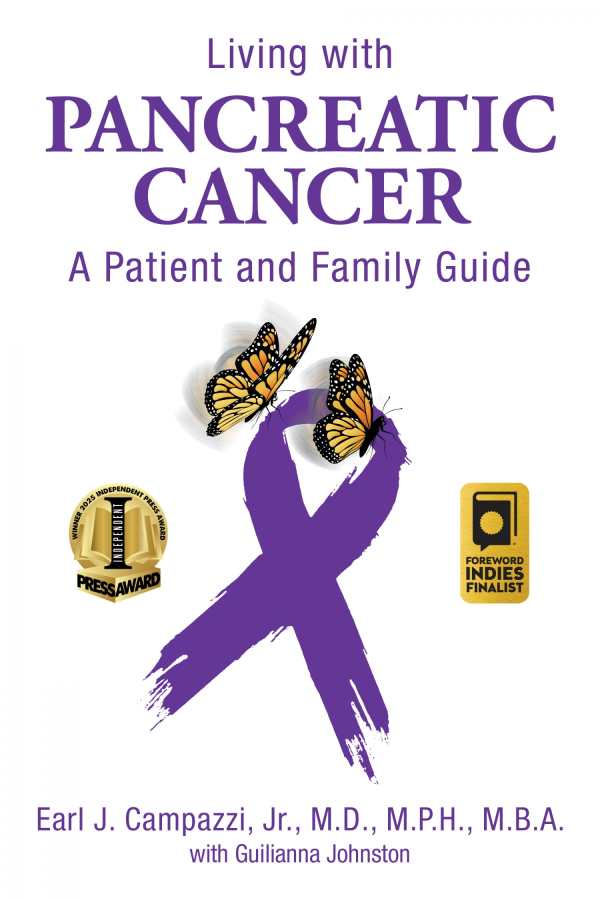
Living with Pancreatic Cancer
A Patient and Family Guide
- 2024 INDIES Finalist
- Finalist, Health (Adult Nonfiction)
Drawing on credible medical resources and patient experiences, Living with Pancreatic Cancer breaks down the aspects of a cancer diagnosis with specificity and clarity.
Earl J. Campazzi’s informative medical self-help book Living with Pancreatic Cancer is an expansive and heartfelt resource for patients and their caregivers.
The book addresses the realities of a pancreatic cancer diagnosis, noting it is an “extremely unfair” disease whose impacts have been felt by people including US Supreme Court Justice Ruth Bader Ginsburg, Steve Jobs, and Patrick Swayze. Acknowledging that metastatic pancreatic cancer has “no secret or miracle cure,” the book is pragmatic but reassuring in tone throughout. It compares receiving a diagnosis to a roller-coaster ride marked by natural angst, trepidation, and periods of queasiness.
Nonetheless, the book recommends responding to a diagnosis with positivity, listing fifteen comprehensive steps along the way. It covers how to seek treatment and leverage specialized doctors and medical centers; details about how family members can assist patients also play in. The basics of the pancreas, immune system, organoids, and surgery options are explored using a mix of narrative, line drawings, and images for balance. And examples of people who took active roles in their treatment are highlighted with hope. The book concludes by covering financial considerations at the state and federal levels, naming nonprofit and industry-funding resources for clarity.
The text draws on credible medical resources and patient experiences to break down the aspects of a cancer diagnosis using specific support avenues. For example, it includes quotes from three separate patients to supplement its sections on diagnosis, doctors, and insurance. Grounded in hope, it canvasses how to approach treatments and medical results, listing top cancer centers including the University of Texas MD Anderson Cancer Center, the Memorial Sloan Kettering Cancer Center, and the Mayo Clinic based on US News & World Report rankings. It delineates multiple layers of the medical profession, including anesthesiologists, surgical nurses, pathologists, and radiologists, and says that all should be considered when selecting treatment locations. It also advises “overreading,” or obtaining a second opinion on pathology slides and imaging, to ensure appropriate treatment.
The language is accessible, conveying sometimes-difficult subject matter with lucidity and optimism. And the book’s reliance on artificial intelligence search results, as with a list of the pros and cons of clinical trials and explanations of treatment side effects versus quality of life, results in comprehensible information. Herein, AI is treated as a force multiplier for tailoring treatments to each patient, expediting analyses of an aggregation of bulk data.
An encouraging resource for patients and family members, Living with Pancreatic Cancer delivers a thorough understanding of how diagnoses should be handled and how life should be approached with the disease.
Reviewed by
Katy Keffer
Disclosure: This article is not an endorsement, but a review. The publisher of this book provided free copies of the book and paid a small fee to have their book reviewed by a professional reviewer. Foreword Reviews and Clarion Reviews make no guarantee that the publisher will receive a positive review. Foreword Magazine, Inc. is disclosing this in accordance with the Federal Trade Commission’s 16 CFR, Part 255.
